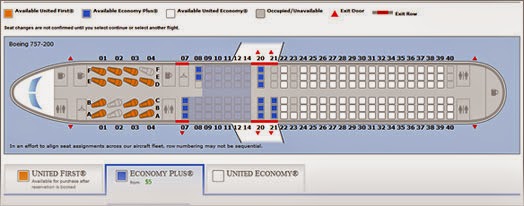At Steele Luxury Travel, we use seat maps every day to look up award availability for our clients and to assign purchased seats. Many times, a seat map will show available seats when they are not. Other times, seats will show occupied or blocked, when in fact they are available. Thanks to Rick Seaney at USA Today, he has broken down the seat map conundrum. A SteeleTravel tip: Use Expertflyer.com seat map– here you will see which seats are actually taken and which seats are block aka available… Enjoy the read!
Frugal fliers shop for the best airfare possible, then once settled on the tickets, have one last little chore: Scoping out the airline seat map to decide where to sit. That’s when the trouble starts.
Q: Airline seat maps show all the available empty seats on a plane, correct?
A: Not always. It is at the airlines’ discretion what to show, and they use said discretion. Sometimes this means showing only a few of the available seats.
Q: Why would some seats be hidden?
A: A few reasons: An airline’s competitors could scrape this very proprietary info. Plus, airlines’ sophisticated computer systems decide what to show and what not to show at any given time (similar to the computers deciding what ticket price to charge at any moment). Finally, these days, an empty seat is one more service that can be exploited for a fee.
Q: Doesn’t the cost of a ticket cover the seat?
A: Yes, but not any particular seat – not in economy – and a ticket does not necessarily entitle you to a seat of your choosing. Delta’s Contract of Carriage states ticket buyers are purchasing “transportation“; United calls it “space” while American refers to it as “travel.” Southwest’s open-seating policy merely guarantees passengers a place in the line to board the plane and then find a seat.
Q: Who does this affect?
A: It can make life difficult (and expensive) for families or groups of friends who want to sit together in economy. Sure, empty middle seats are usually available, as are a sprinkling of aisle or window seats in the Siberia of the back of the plane, but few of these available seats are positioned side-by-side. Not so surprisingly, this pain can often be alleviated by paying a fee.
Q: At least when you pay a seat fee, you get more legroom, right?
A: Not necessarily. Depending on the airline, there can be regular seat fees and premium seat fees. Let’s use American as an example, but others do this, too: AA’s Preferred Seats (from $4 to $139) offers “more favorably located” seats only, while the airline’s Main Cabin Extra (from $20 to $195) offers a bundle consisting of a favorable location plus more legroom plus early boarding.
Q: Is there any way to avoid seat fees?
A: Most airlines offer a few ways to avoid paying (although fee-happy Spirit Airlines makes most customers pay for any seat selected in advance). Try the following:
• Achieving elite status in miles programs typically bypasses seat fees
• Keep checking the seat map before departure since free seats can be released at any time, depending on whether the airline computer is in a “forgiving” mood
• Look at fee prices for better seats as you check back since these prices can drop
• Check the seat map at the 24-hours-before-departure mark, as this is when more available empty seats are usually released
• Brace yourself for a pot luck assignment, which will be free

